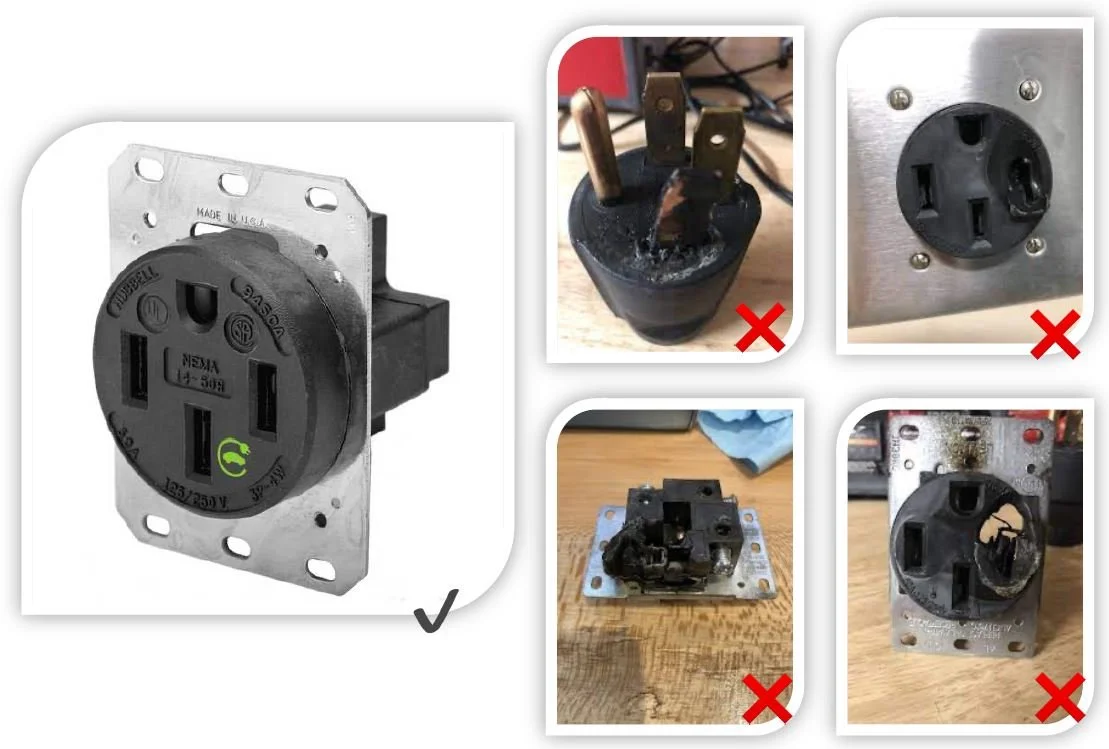What you need to know about EVSE receptacles
As electric vehicles grow in popularity, many builders are offering EVSE pre-wires and 50A receptacles in their new homes. While plug-in EVSEs use a NEMA 14-50 receptacle, not all receptacles are created equally.
Most builders will recognize the NEMA 14-50 50A receptacle as the same type used for ranges. While this is true, there are important differences between the receptacles made for ranges and the receptacles made for EVSEs. Knowing the difference can reduce your liability and help avoid a catastrophic outcome.
Because they are typically only used for 1-3 hours at a time, 50A range receptacles are made of less expensive plastics and contacts. Commercial grade 50A receptacles, like the Hubbell HBL9450A, are specifically recommended by the most popular electric vehicle manufacturer. This commercial-grade EVSE receptacle is made of more durable plastics and single-piece contacts that help dissipate heat that builds up over the duration of electric vehicle charging; furthermore, this product is tested for ten hours of continuous load that occurs during electric vehicle charging. Using a range receptacle for this same purpose can lead to melted components, reduced charging amperage, risk of electrocution when plugging in or removing equipment, or even a tragic event like a house fire. It’s not difficult to find images of these melted range receptacles on the internet.
If you’d like to find out more about the best practices other builders are utilizing to reduce risk and provide an optimal EVSE charging experience, contact the Werner Electric Supply Residential Team at Resiteam@wernerelectric.com or 920-815-4050
Other resources:

